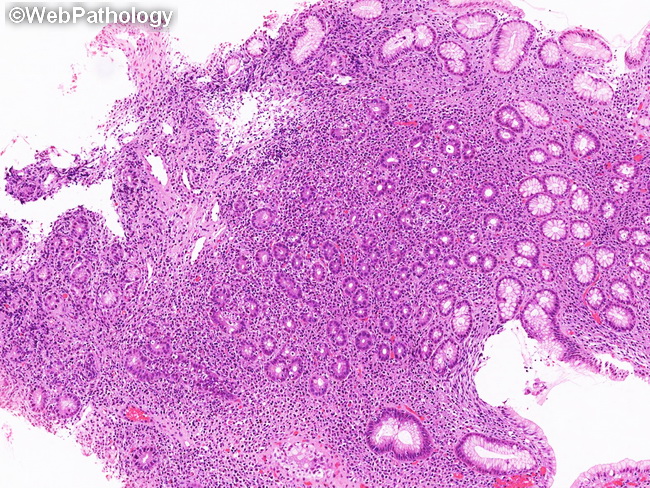Gastric MALT Lymphoma : Pathogenesis


Comments:
Gastric MALT Lymphoma - Pathogenesis: Most Gastric MALT lymphomas arise in acquired MALT associated with H. pylori infection. H pylori is detectable in gastric mucosa in the vast majority of gastric MALT lymphomas (85-90% of cases). Clonal B-cell populations have been demonstrated in biopsies with chronic gastritis preceding the development of lymphoma. Although the prevalence of H. pylori in general population is about 50%, only 1% will develop gastric adenocarcinoma or lymphoma. Antibiotic therapy for H. pylori is the first line of treatment and induces remission in about 80% of cases. Additional Helicobacter species such as Helicobacter heilmannii have been implicated in the pathogenesis of gastritis, peptic ulcer disease, gastric carcinoma, and gastric MALT lymphomas. This gastric biopsy with MALT lymphoma shows a dense, monomorphic lymphoid infiltrate expanding the lamina propria and displacing the glands. The infiltrate is too exuberant and too monotonous than that seen with chronic gastritis.



